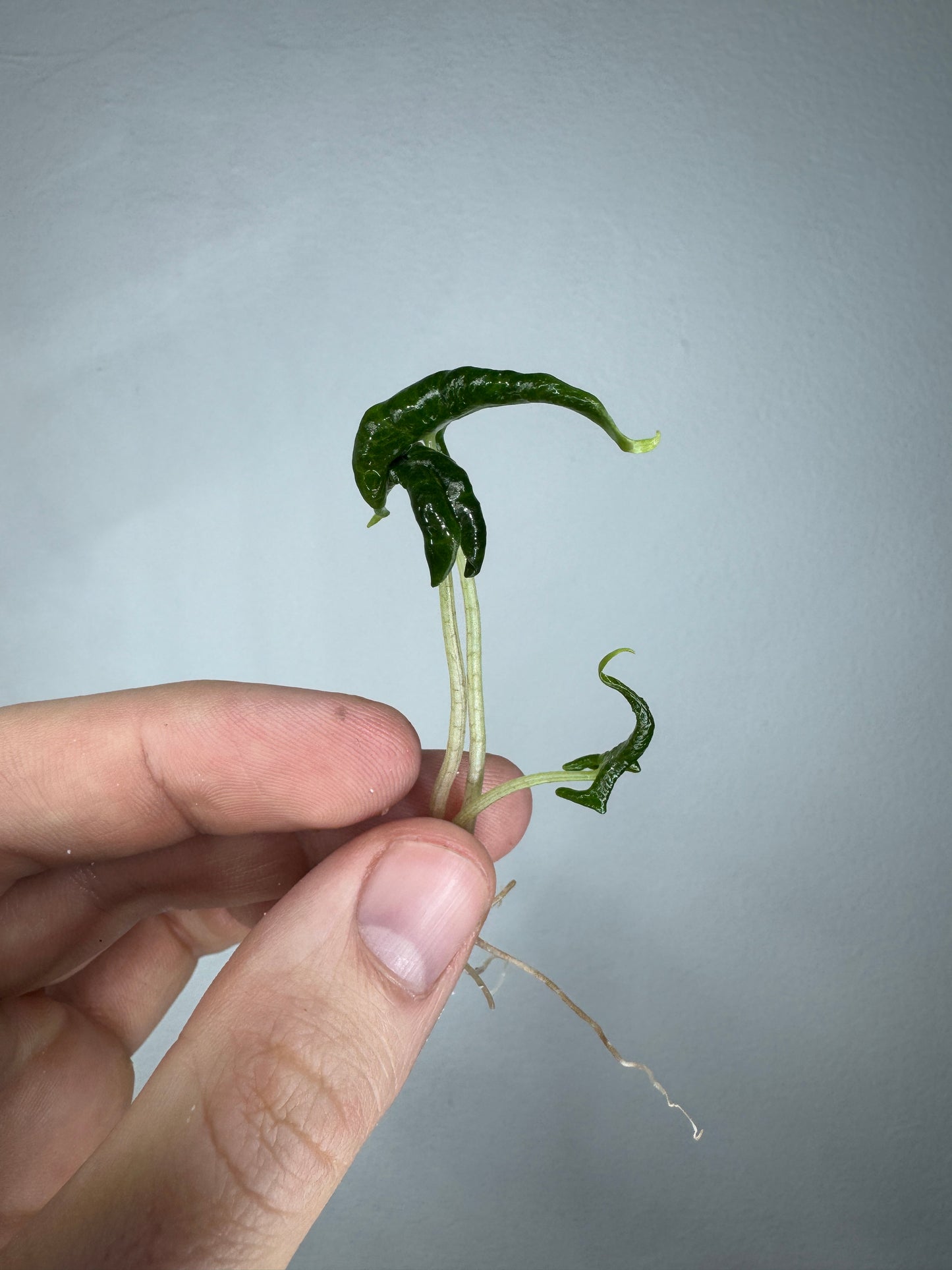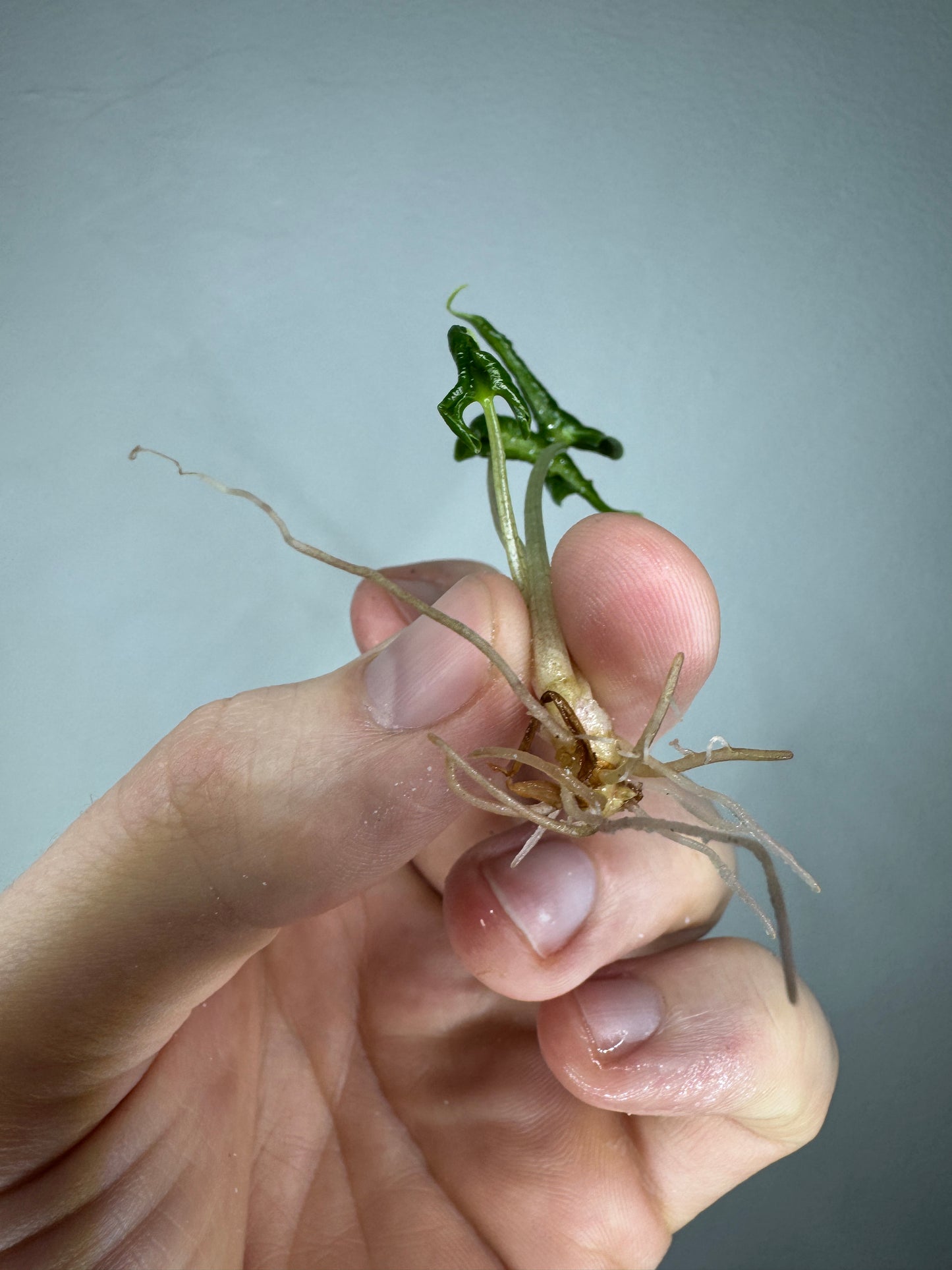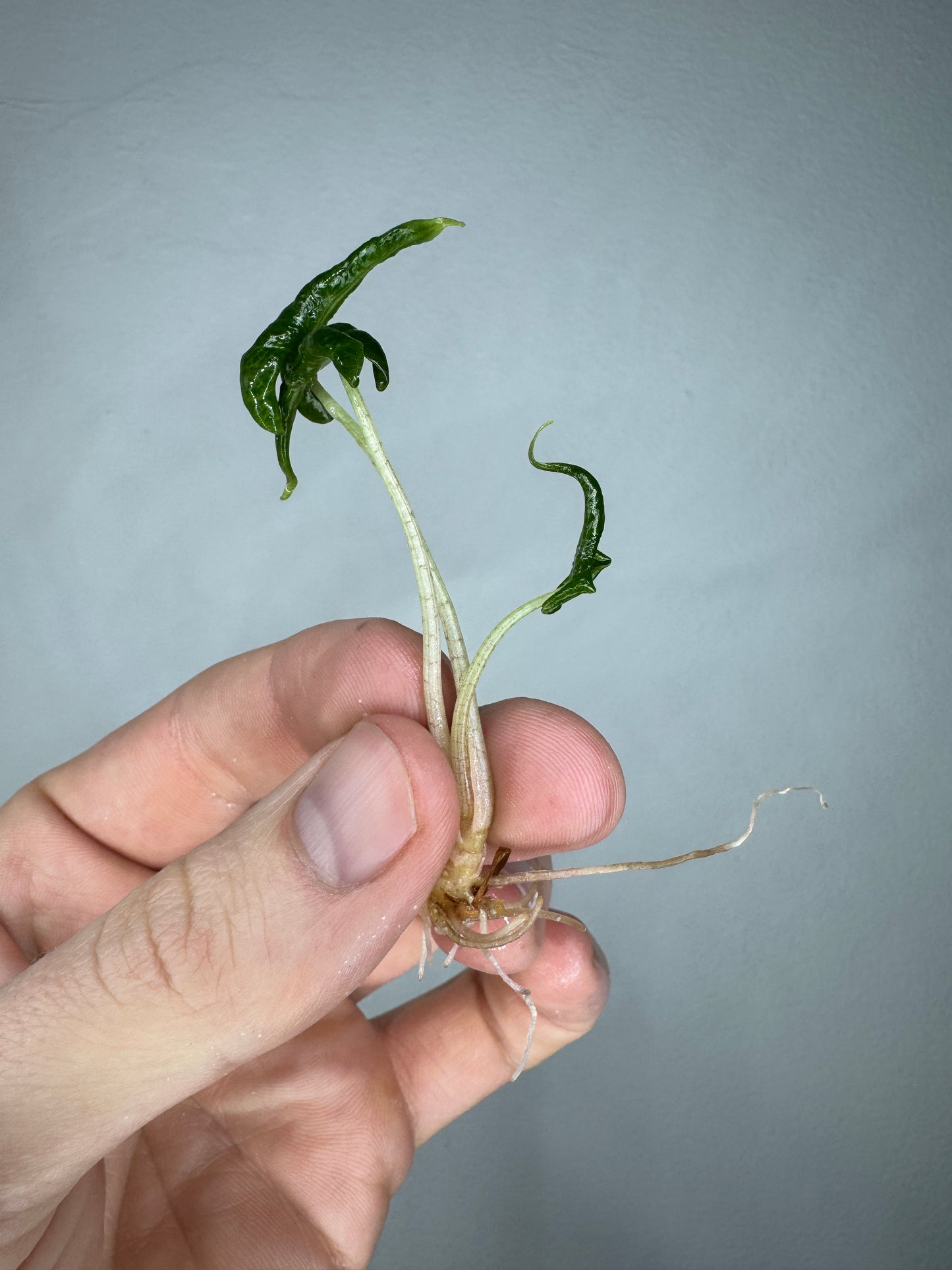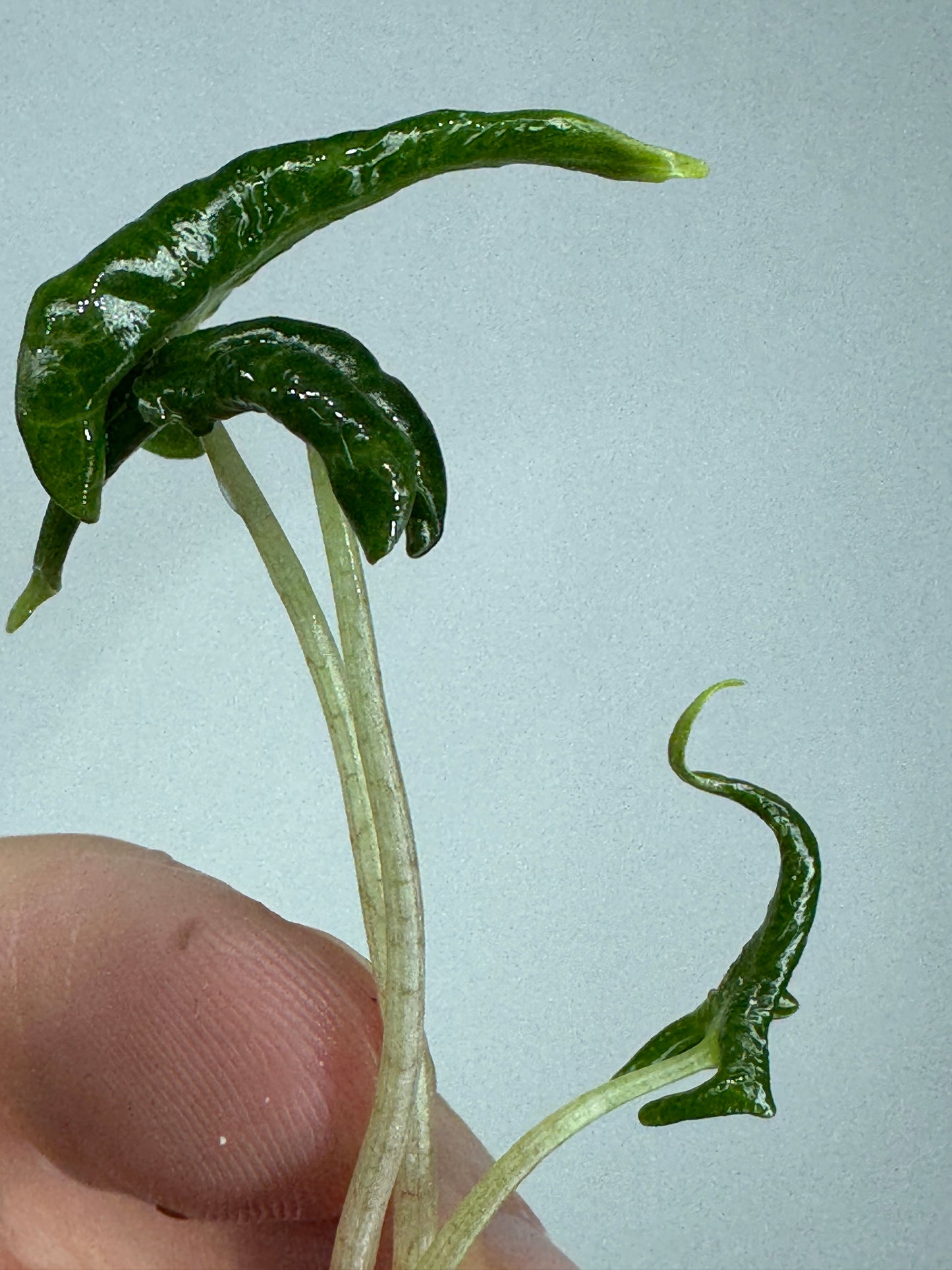Plantthatplant
Alocasia loco
Alocasia loco
Impossibile caricare la disponibilità di ritiro
About
About
Alocasia ‘Loco’ – History & Care Guide
History & Background
Alocasia ‘Loco’ is a rare and unique cultivar of Alocasia, a genus of tropical plants in the Araceae family. This variety is particularly known for its striking foliage, featuring wavy, almost ruffled leaves with deep green tones and an exotic, almost metallic sheen. The name ‘Loco’ suggests a wild or unpredictable growth habit, which aligns with its vigorous and sometimes challenging care requirements.
While the exact origin of ‘Loco’ is unclear, it likely originates from hybridization efforts aimed at developing compact yet highly ornamental Alocasias. Like other Alocasia species, its ancestry can be traced back to Southeast Asia, where Alocasias grow in humid, tropical environments under the canopy of dense forests.
Care Guide
1. Light Requirements
Prefers bright, indirect light. Too much direct sunlight can scorch its delicate leaves, while too little light can slow growth and cause leggy stems.
Can tolerate dappled sunlight but should be shielded from intense midday rays.
2. Watering
Keep the soil consistently moist but not soggy. Overwatering can lead to root rot, a common issue with Alocasias.
Water when the top 2-3 cm of soil feels dry, usually every 5-7 days, depending on humidity and temperature.
Reduce watering in the winter when growth slows.
3. Humidity & Temperature
Requires high humidity (60% or above) for optimal growth. If indoor air is dry, use a humidifier, pebble tray, or frequent misting.
Thrives in temperatures between 18-27°C. Avoid exposure to cold drafts, sudden temperature drops, or heaters.
4. Soil & Potting
Needs a well-draining, chunky soil mix that retains moisture while allowing airflow.
Aroid mix is ideal: peat moss, perlite, orchid bark, and charcoal in equal parts work well.
Use a pot with drainage holes to prevent waterlogging.
5. Fertilization
Feed with a balanced liquid fertilizer (10-10-10 or 20-20-20) every 2-4 weeks during the growing season (spring and summer).
Reduce feeding in fall and winter.
6. Propagation
Best propagated via division of rhizomes or corms.
When repotting, gently separate offshoots or corms and replant them in fresh soil.
7. Pests & Common Issues
Susceptible to spider mites, thrips, and mealybugs. Regularly check the undersides of leaves and treat infestations with neem oil or insecticidal soap.
Yellowing leaves – Often due to overwatering or poor drainage.
Crispy edges or brown spots – Indicates low humidity or inconsistent watering.
Dormancy – In colder months, Alocasia ‘Loco’ may drop leaves and go dormant. Reduce watering and wait for new growth in spring.
Final Tips
Alocasia ‘Loco’ is a dramatic but rewarding plant, perfect for those who enjoy the challenge of high-humidity tropical plants. With the right care, it will reward you with stunning foliage and steady growth. Keep an eye on its needs, and it will thrive in your collection!
Specification
Specification
Share








